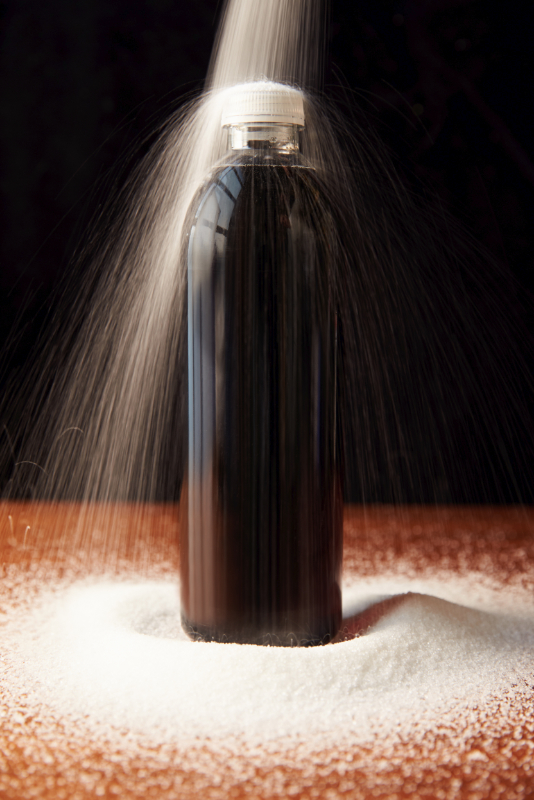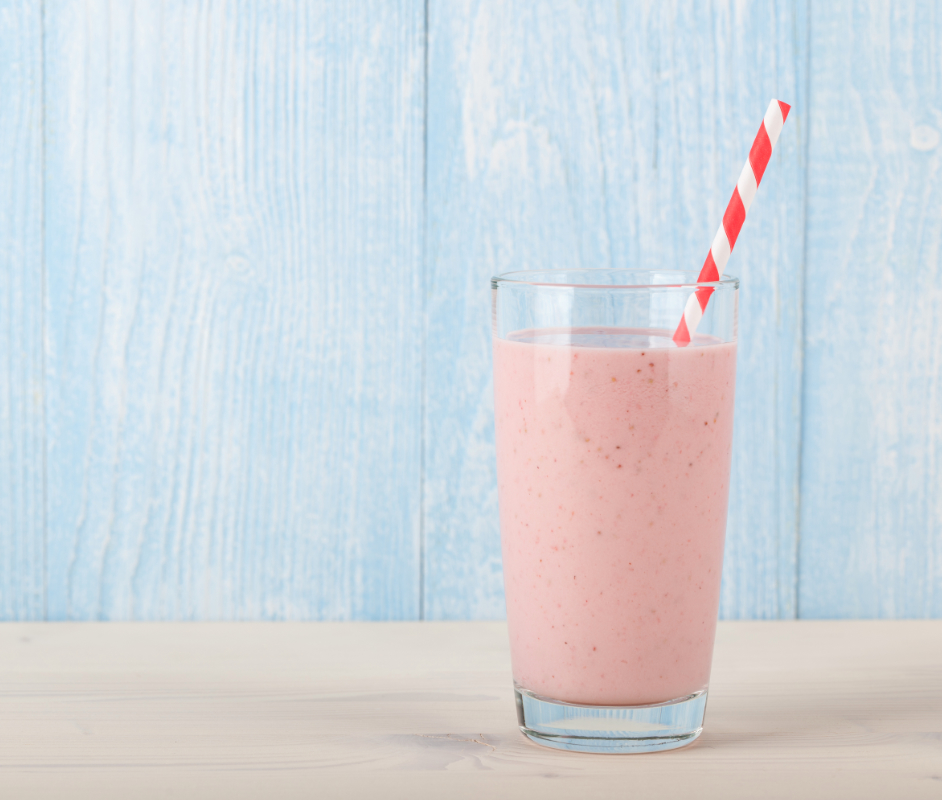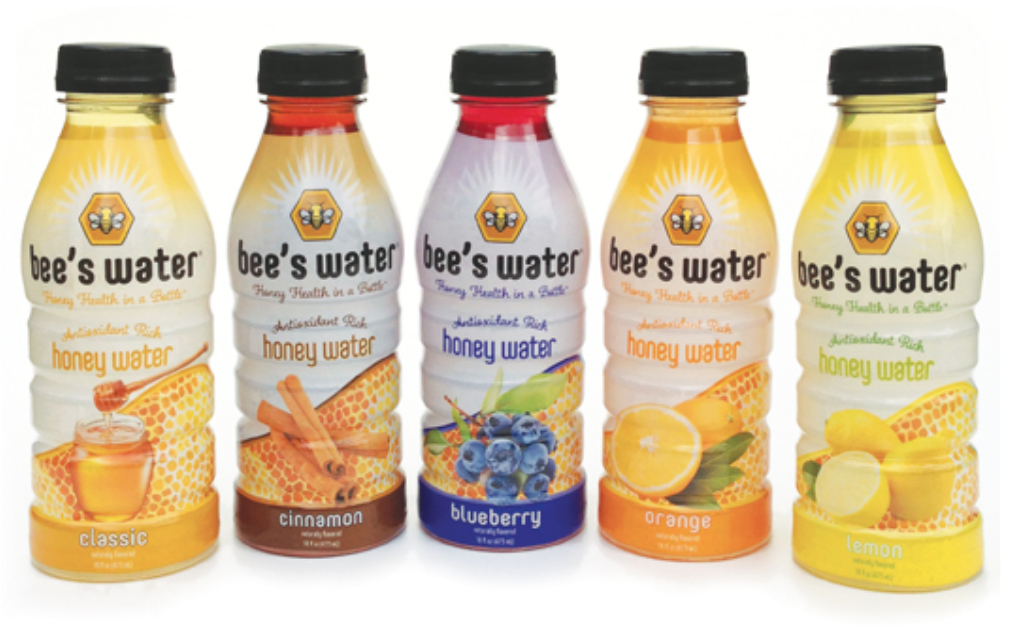CHICAGO — Added sugars are a new required line in the Nutrition Facts Label and are under scrutiny by consumers. Fifty-nine per cent of respondents to the 13th Annual Food and Health Survey from the International Food Information Council Foundation, Washington, said they have a very or somewhat negative perception of added sugars, with almost a third (32%) having developed a much more or somewhat more negative attitude during the past year.
Compliance with the new line mandated for added sugars, food and beverage manufacturers with $10 million or more in annual food sales is required by Jan. 1, 2020. For smaller companies, the compliance date is one year later. The specific change is quantifying total sugars, which includes all naturally occurring sugars, such as fructose in orange juice and lactose in milk, and added sugars. Under that line, added sugars are broken out separately as a clear call out to consumers. No Daily Value was set for total sugars; however, for added sugars, it is 10% of calories, or 50 grams for adults and children over four years of age.
Many consumers need to reduce intake to meet the Food and Drug Administration’s recommended daily value for added sugars. How they get to less than 50 grams per day is their choice. For many, it is personal, which is why an increasing number of consumers scrutinize ingredient legends. For some, sugar source matters, with a growing number of consumers preferring minimally processed sweeteners.
“Intense focus on added sugars consumption and links to obesity, diabetes and heart disease is motivating consumers to not only reduce total sweetener consumption, but to also switch to sweeteners perceived as more healthful,” said David Sprinkle, research director, Packaged Facts, Rockville, Md.
 Consumers in the United States are developing a better understanding that not all sugars are alike, according to research conducted by Ipsos, New York, on behalf of Morris Plains, N.J.-based Beneo. The study of 1,000 U.S. consumers indicated that along with seeking foods that are natural, have a clean label and nutritious without empty calories, they also pay attention to the levels of sugar contained in their food choices.
Consumers in the United States are developing a better understanding that not all sugars are alike, according to research conducted by Ipsos, New York, on behalf of Morris Plains, N.J.-based Beneo. The study of 1,000 U.S. consumers indicated that along with seeking foods that are natural, have a clean label and nutritious without empty calories, they also pay attention to the levels of sugar contained in their food choices.
Respondents indicated they are aware that the amount and type of sugars play a role in coping with health issues. While consumers said they have an ambivalent relationship with sugar, they indicated there is awareness that some sugars are better for their health than others.
Sugar from honey, for example, was perceived as the most appealing sweetener because it is natural. Furthermore, about two out of three respondents agreed that naturally derived sugars from fruits, vegetables and plants are healthier. A similar number said they preferred natural sugars to low-calorie sweeteners. Finally, 60% of the consumers polled indicated their ideal sweetener would not lead to a “sugar boost and crash effect.”
Replacing sugar’s functionality
Beverage marketers are responding through new approaches to reducing added sugars. Often this may be accomplished by using juice concentrates and extracts that are inherently naturally sweet. Some natural flavors may be used to amplify sweetness, while others add flavor that distracts from the reduced sugar taste.
With preference for clean label gaining momentum across all food and beverage, high-intensity artificial sweetener use is losing traction. On the other hand, stevia leaf extracts, especially the newer options with reduced bitter off tastes, as well as monk fruit extract, are becoming more common.
Depending on the beverage, the natural high-intensity sweeteners tend to work best when used with sugar. That’s because the sugar rounds out the sweet curve, allowing the tongue’s receptors to perceive a more balanced taste profile.
“Intense focus on added sugars consumption and links to obesity, diabetes and heart disease is motivating consumers to not only reduce total sweetener consumption, but to also switch to sweeteners perceived as more healthful.”
— David Sprinkle, Packaged Facts
With traditional sugar-sweetened beverages, the basic taste of sweet comes on slowly. It builds roundness and then slowly abates. Many high-intensity sweeteners deliver an upfront sweetness that lingers. Sugar also has a clean and crisp sweet taste. Many replacements have off flavors. That is why replacing sugar with a single ingredient seldom does the job. Blending sweeteners — and often adding other ingredients — increases the potential for success.
Sugar also provides bulk and mouthfeel. That is where some isolated fiber ingredients may assist. And now, many of those fiber ingredients may boost the nutrition profile of the beverage by adding fiber to the formulation.
Inulin and inulin-type fructans, including chicory root fiber; high-amylose starch (resistant starch 2); polydextrose; mixed plant cell wall fibers, including sugar cane fiber and apple fiber; arabinoxylan; alginate; galactooligosaccharide; and resistant maltodextrin/dextrin are now recognized by the U.S. Food and Drug Administration as fiber, according to a final guidance published June 14 in the Federal Register.
The announcement follows several petitions, many with like-ingredient suppliers working together to request the addition of beneficial non-digestible fibers to the F.D.A.’s definition of fiber, which was issued on May 27, 2016. This was the F.D.A.’s first time defining fiber, with the definition being “non-digestible soluble and insoluble carbohydrates (with three or more monomeric units), and lignin that are intrinsic and intact in plants; or isolated or synthetic non-digestible carbohydrates (with three or more monomeric units) determined by the F.D.A. to have physiological effects that are beneficial to human health.”
Each of the eight recently approved fibers fit the second definition. The petitions, and supporting research, showed the fibers support physiological health benefits as assessed by the F.D.A.’s criteria, said Carl Volz, president, Sensus America, Lawrenceville, N.J.
 The original 2016 ruling only identified seven isolated/synthetic fibers as meeting the definition of dietary fiber. They are: beta-glucan soluble fiber, cellulose, guar gum, hydroxypropylmethcellulose, locust bean gum, pectin and psyllium husk.
The original 2016 ruling only identified seven isolated/synthetic fibers as meeting the definition of dietary fiber. They are: beta-glucan soluble fiber, cellulose, guar gum, hydroxypropylmethcellulose, locust bean gum, pectin and psyllium husk.
With chicory root fiber/inulin now recognized, select forms of the ingredient may be used to assist with sweetening beverages without being declared as an added sugar. These are dietary fibers that provide natural sweetness, at only 2 calories per gram, vs. sugar’s 4 calories per gram. Some ingredients provide more sweetness than others, and their ability to work synergistically with other no-added-sugar sweetening systems varies, too. Recognition as fiber further assists formulators with boosting the nutrient of concern in beverages to help consumers meet their daily requirements.
“Some of these chicory root fiber inulin ingredients are as high as 65% the sweetness of sugar, yet still contain at least 75% dietary fiber,” said Scott Turowski, technical manager at Sensus America. “Chicory root fiber is synergistic with high-intensity sweeteners and has masking properties to help provide a clean sweetness.”
Many of the recognized isolated fiber ingredients assist with sugar reduction by providing bulk to the beverage system. Polydextrose, for example, adds body and builds total solids. Some starches and gums may build viscosity, provide body, contribute to mouthfeel and prevent phase separation.
Sugar reduction options at IFT18
Minneapolis-based Cargill created a reduced-sugar strawberry drinkable yogurt with 4 grams of added sugars per serving. Sampled at IFT18, held July 14-18 in Chicago, the company built back the missing sweetness with steviol glycosides. To create the creamy, thick mouthfeel consumers expect from a drinkable yogurt, the company used corn starch and chicory root fiber.
 “We created a mouthfeel comparable to a full-sugar drinkable yogurt,” said Mandy Kennedy, senior marketing manager. “The resulting beverage meets consumers’ label and sensory expectations, keeps added sugars in check and qualifies as an excellent source of dietary fiber, protein and calcium.”
“We created a mouthfeel comparable to a full-sugar drinkable yogurt,” said Mandy Kennedy, senior marketing manager. “The resulting beverage meets consumers’ label and sensory expectations, keeps added sugars in check and qualifies as an excellent source of dietary fiber, protein and calcium.”
North Brunswick, N.J.-based FlavorHealth demonstrated how its natural flavors improve the taste challenges associated with certain stevia sweeteners. Prototypes sampled included a stevia-sweetened energy beverage with reduced bitterness and sweet linger, as well as an iced tea with 30% and 80% sugar reduction without any off tastes.
Kerr Concentrates from Ingredion Inc., Westchester, Ill., showcased its range of fruit and vegetable juices, purees, concentrates, essences and distillates, and how they may be used in conjunction with the company’s range of sweeteners, fiber ingredients and bulking agents to create low- and no-added sugar beverages. Including produce ingredients in beverages often allows for a fruit and vegetable content claim.
New concepts on the market
Beverage innovators are embracing the fact consumers want less sugar. They are getting creative with their ingredient toolbox to bring to market many varied options.
“Today’s consumers want a variety of beverage options that help them maintain a well-rounded, healthy lifestyle without sacrificing taste,” said Kelly Marx, brand director, Simply Beverages, Apopka, Fla.
 In response, the company is introducing Simply Light, a line of lemonades and orange juice drinks with less sugar and fewer calories than their traditional counterparts. By combining either 10% lemon juice or 42% orange juice with water and other natural ingredients, the company is able to reduce the sugar in half in the orange juice drinks and by 75% in the lemonades, producing beverages with 50 or 25 calories, respectively, per 8-oz serving.
In response, the company is introducing Simply Light, a line of lemonades and orange juice drinks with less sugar and fewer calories than their traditional counterparts. By combining either 10% lemon juice or 42% orange juice with water and other natural ingredients, the company is able to reduce the sugar in half in the orange juice drinks and by 75% in the lemonades, producing beverages with 50 or 25 calories, respectively, per 8-oz serving.
The pulp-free orange juice drinks, which come in regular and with calcium and vitamin D, rely on citric acid to replace some of the tartness that goes missing during the juice dilution. Natural flavors round out the taste and beta carotene stabilizes the color. Stevia is added for some sweetness, yielding a beverage with 11 grams of inherent sugar and no added sugars.
The lemonades — regular and with raspberry — are sweetened with a blend of sugar and stevia. An 8-oz serving contains 5 grams of added sugar.
The Glow Capri Lemon Ginger variety is a blend of lemon and ginger juices with plant extracts, such as white tea and marigold, all known to enhance skin radiance. The Immunity French Blueberry variety blends blueberry and pomegranate juices with lavender extract and immunity-boosting plant extracts to yield a beverage designed to support the immune system.
“Restore Sicilian Blood Orange is our anti-inflammation formula,” said Royce Pinkwater, founder and chief executive officer of Bonta, New York. “It contains turmeric, blood orange juice and hibiscus. Vitality Turkish Cherry has resveratrol, which builds heart health. The drink is infused with antioxidant-rich cherries, lycopene and elderflower and other invigorating ingredients to help rejuvenate the body.”
Bee’s Beverage Corp., Princeton, N.J., makes honey the main attraction in its line of Bee’s Water, which comes in blueberry, cinnamon, classic, lemon and orange varieties.

“Honey water is a popular drink in many countries and is believed to have a number of health benefits,” said Henry Owunna, founder and c.e.o. “Honey contains amino acids, minerals, vitamins, proteins, enzymes and antioxidants. It is the combination of these compounds that provides the unique health benefits of honey.”
Honey is also flavorfully sweet and a source of natural energy. Bee’s Water blends honey with filtered water and natural flavors. It gets a boost of antioxidants through the addition of vitamins A, C and E. An 8-oz serving contains 40 to 45 calories and 9 to 11 grams of sugars, all from the honey.
“Drinking Bee’s Water before or during exercise can help release honey energy into muscles at a steady rate, delaying fatigue,” Mr. Owunna said. “It’s refreshing and hydrating when cold, but can also be soothing and calming when served hot.”
Alcoholic beverages tend to be a concentrated source of sugars, especially cocktails that rely on juices and syrup. To assist in reducing sugar and calories, there’s been a surge of ready-to-drink mocktail concepts entering the marketplace, such as those from Mingle Beverage Company L.L.C., Wayne, Pa.
“The drinks are blends of real fruit juices, a touch of organic cane sugar and various botanical extracts,” said Laura Taylor, founder and c.e.o.
Mingle is available in 750-ml bottles in four varieties: blackberry hibiscus Bellini, cranberry Cosmo, melon Mojito and Moscow mule. An 8-oz pour is only 40 calories, with 8 to 9 grams of sugar, about a third of what’s in the alcoholic counterpart.




